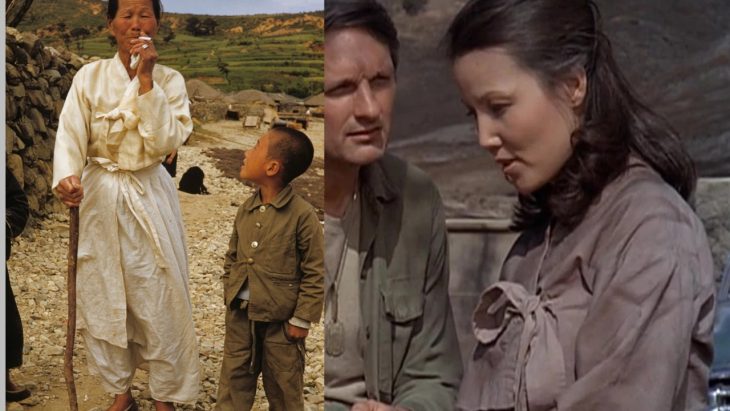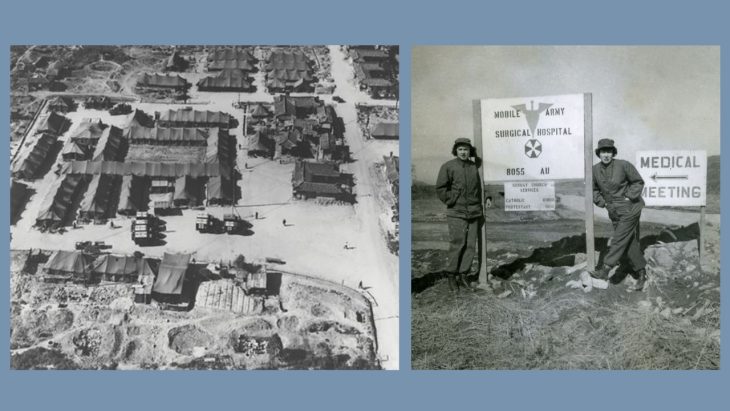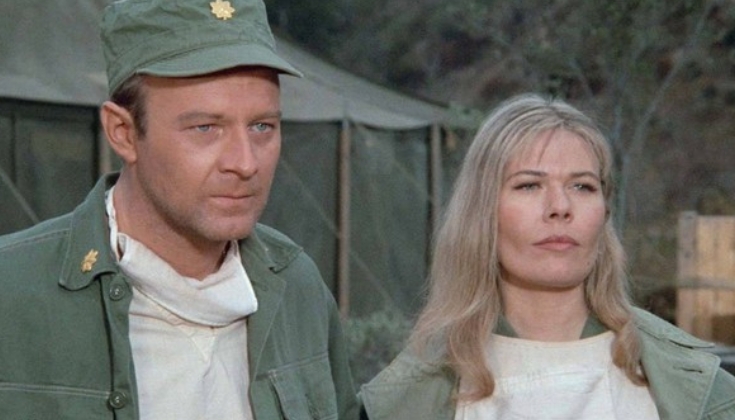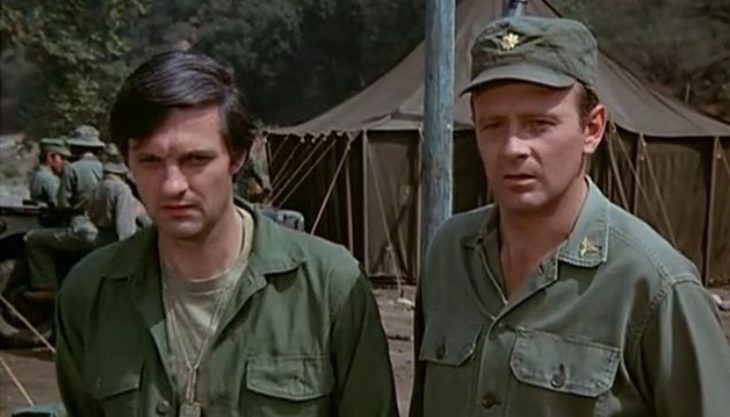MASH often featured Korean locals speaking their native language. As I’ve already written, there were very few Korean actors on the show. Most of the Korean characters were played by Chinese or Japanese actors. So, was the Korean speaking on MASH accurate? The answer is no, not at all. The actors speaking it had no idea how to speak Korean. It is not even clear they were told what to say and may have been just filling in something in their own language or something they thought sounded Korean. In fact, Koreans have criticized not only the portrayal of the Korean language, Hangugeo, but it’s portrayal of Korean culture in general.

MASH was a fictional half-hour show about a MASH unit located close to the front lines during the Korean war. The showrunners had a hard enough time trying to get details about life at a MASH unit correct, within reason. Getting the Korean language and culture correct is perhaps beyond what we can expect. They relied on the memories of American soldiers not only for military details, but for details about Korea itself. While a Korean cultural expert would have been a handy addition to the staff, for better or worse, watching MASH is not a good way to learn about Korea or Koreans.
Given that, some of the language mistakes were particularly bad. In early episodes of MASH, we hear Korean characters saying “mama San.” Colonel Blake is even referred to as Colonel san. This is Japanese and has nothing to do with the Korean language. But language isn’t the only criticism.
Koreans on MASH Wore the Wrong Clothing?
Koreans have criticized, for instance, the wardrobe worn by Korean characters on the show, saying the clothing was mostly Japanese. Now, I might quibble with the idea that sundry Koreans on the internet consider themselves experts on Japanese clothing and on the clothing Korean villagers war in the early 1950s, but they certainly have better qualifications than I do to judge. According to this article, the female Koreans on MASH wore traditional Japanese clothing and the men wore Vietnamese hats.
We don’t have to rely on the expertise of unknown Korean authors or social media posters, however. This is the internet, after all. Judging by what I could find about how rural South Koreans dressed during the 1950s, these criticisms are not fair. In fact, while the colors may have been wrong, the basic clothing that Korean women wore on MASH was a fairly good representation of Korean clothing of the era, especially in rural areas.
You can judge for yourself whether you think the MASH creators could have done a better job in this department. In the image above, I’ve included a Korean woman from the 1950s, dressed in a traditional looking “Jeogori” alongside and image of the Korean countess named Kyung Soon, Hawkeye’s love interest in the episode “In Love and War.”
The men wore similar tops and white was the primary color used, although the war probably had a great effect on this. I’m not sure if the color worn by Kyung Soon can be viewed as accurate, but the clothing seems to be. And, indeed, she was a wealthy aristocrat before the bombs dropped and, so the purplish color may have been appropriate to her wealth and status. At the same time, Western fashion had already started to influence the way Koreans dressed, and a Korean aristocrat who was wealthy before the war would have likely owned some Western-style dresses, as also depicted in the episode.
The Landscape on MASH Didn’t Look Like Korea?
Other complaints are about the landscape, saying it too looks more like Vietnam. This surprised me as I remember hearing that Korean war veterans though that the landscape on the show and the film reminded them very much of Korea. Regardless, I do not know why anyone would expect the showrunners to be able to film an American television show in Korea, the only place you could find a truly accurate Korean landscape, but there it is. J
udging by the films I’ve seen of actual MASH units, however, the landscape in the Southern Californian hills where the outside scenes of MASH were filmed is about as close to Korea as you are likely to get in the states and does not seem to resemble Vietnam more than Korea. The shooting area was the area of Malibu Creek State Park. Note, however, that the bulk of the filming was done on a sound stage, indoors. Again, we have Korean folks on the web who are experts on the landscape of Vietnam, a country that is 2000 miles of coastline away.
The Korean Was Not Accurate On MASH
Despite all this, to say that the Korean language speaking on MASH was inaccurate is a more than fair criticism. I’ve noticed, however, that many people somehow expect Chinese and Japanese actors to be able to speak and understand Korean better than they did on the show. This perhaps as silly as Koreans thinking they are experts on 1950s rural fashions of Japan and Vietnam.
Korean Villagers On MASH Spoke English Too Well
However, another easily recognizeable problem with the way the local Koreans on MASH were portrayed is that some of those spoke English much too well and were also too privy to Western culture. For example, you probably remember the big bald “Korean” with a mustache who regularly appeared in various roles, Richard Lee-Sung. He played Korean who made the bust of Colonel Potter for Frank and Margaret, among many other appearances. He spoke perfect English, albeit with an “accent,” and continually made American sounding wisecracks.
In reality, Richard Lee-Sung was Chinese-Mexican, born El Paso and raised in Los Angeles. He was even a US Marine who served in the Korean War, earning a purple heart after being injured in the battle of the Chosin Reservoir, perhaps the most infamous pitched battle in the war. There, the 1st Marine Division and other UN forces were greatly outnumbered by the Chinese. This was a nightmare battle where approximately 2,500 American service members died and thousands were wounded while fighting in harsh and brutal winter conditions. In other words, although he lived in China-Town, Richard Lee-Sung was as much American as Chinese and certainly was no Korean.
The same is true of a majority of the Asian actors who appeared on the show. Most of them were Asian-American and, of course, spoke perfect English. The show took advantage of this and, indeed, having all the characters speak as much English as possible made a half-hour TV show much easier to produce, as, otherwise, too much time would be spent portraying the problems caused by the language barrier. This certainly was depicted on MASH, but it would be highly impractical to frequently have Korean characters with a lot of screen time speak only Korean.





